Published 31 August 2021 ● Last Updated on 12 September 2021
The oceans, covering more than 70% of earth’s surface, play a pivotal role in maintaining the ecological balance of the planet by serving as a major heat and carbon sink. Despite their starring roles in mitigating weather extremes and generating the oxygen we breathe, our callous attitude towards ocean pollution has bought this engine of life under major threat. Research into plastic pollution in the ocean shows that “less than 20% of leakage originates from ocean-based sources like fisheries and fishing vessels” while “over 80% of ocean plastic comes from land-based sources.” (Download the study here). These numbers speak volumes about human use (read overuse) of plastic and gross neglect in the way it is discarded, allowing such large volumes of plastic to leak into the ocean.
To combat the horrific levels of marine pollution, Ocean Conservancy has been spearheading an annual the International Coastal Cleanup Day for more than 30 years now. The campaign is a call to arms for volunteers across the globe (153 countries thus far!) to collect and log each trash item into a common database. The result of the effort is not only cleaner beaches left behind, but also a data mine of what pollutes the world’s waters, and how much. According to the 2020 report which covers 2019 data (download the pdf here), some of the weirdest items found include a tiki torch rubber chicken, barbecue machine, couch, bathtubs and even dumbbells (aqua weight training?)! A significant takeaway from their 2020 report is that all of the items in the top 10litter collected were made of plastic. So, based on Ocean Conservancy’s report here are the top 10 items polluting our oceans:
# 1 Food Wrappers
Amount collected: 4,771,602
Congratulations, with enough food wrappers collected to a create a three-acre carpet on the sea-floor, food wrappers have replaced cigarette butts as the number one item found by Ocean Conservancy’s International Coastal Cleanup (ICC) volunteers! But that;s not all – most of these wrappers are not biodegradable and just languish on sea floors waiting for sea animals to ingest and choke on them. Seemingly innocuous, most of us probably don’t even think about the astounding amount of waste they create. We can help by looking for sustainable alternatives to food wrappers at home and while shopping to cut down our contribution to plastic debris in the ocean.
Wondering which item topped the list of Singapore Cleanup? At 25%, foam pieces made up the biggest potion of marine debris pie of the island nation.
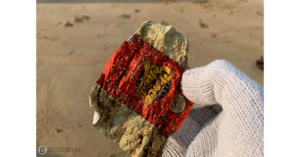
# 2 Cigarette Butts
Amount collected: 4,211,962
News flash – contrary to popular belief, cigarette butts are not biodegradable as they have a plastic filter. Arguably the most famous type of trash items littering our beaches and waterways, cigarette butts have topped the list of most common items found in marine debris since 1986 – that is until now. But moving down the chart of top items found in ocean pollution does not make them less hazardous in anyway. Cigarette butts make their way into the ocean through drains and gutters. In addition to the plastic filter, they pollute the ocean with nicotine, heavy metals and many other toxic chemicals. Imagine the impact of 8,298 pieces cigarette butts found during Singapore cleanup on the marine animals which eat them mistaking them for morsel of food.
Video above: 1647 cigarette butts were collected in under 3 hours in this Secondsguru-led beach cleanup by the team from Lush Cosmetics Singapore !
# 3 Plastic Beverage Bottles
Amount collected: 1,885,833
The amount of plastic beverage bottles we consume year on year is just astonishing. To put things in perspective – 480 billion bottles were sold in 2018 alone, that’s a sale of almost one million plastic bottles every minute! Even worse is the fact that fewer than half of the bottles bought in 2016 were collected for recycling and merely 7% of those collected were turned into new bottles. Given that at 11% plastic beverage bottles already make up a large portion of the Singapore marine debris pie and that number of plastic bottles sold is predicted to rise even higher in the future -we should gear for a significant increase in the amount of marine plastic debris.

# 4 Plastic Bottle Caps
Amount collected: 1,500,523
Though huge amounts of plastic caps were found and collected in the International Coastal Cleanup, many more still remain in the sea, jamming animal airways and causing them great discomfort and pain. Small enough to be swallowed whole by birds and sea animals, bottle caps to your favorite beverage are nefarious as most recycling centres don’t accept just caps. Constituting 4% of top items found in ocean pollution in Singapore, you can do your part by ensuring proper waste disposal and using reusable bottles whenever possible.
# 5 Straws, Stirrers
Amount collected: 942,992
With many countries imposing a ban on plastic straws, people are thankfully waking up to the need for action against plastic pollution in the ocean. However, we have a long way to go before we can breathe a sigh of relief as evident by the 9,42,992 straws/stirrers found littering the ocean bed – enough for 322 octopuses to drink 8 smoothies a day for a year! Lightweight and easily blown away, straws get stuck in noses and airways of ocean animals, causing serious injuries. Did you know that straws take up to 200 years to decompose? Given the fact that these notorious killers constitute 7% of chunk of ocean debris in Singapore, it’s heartening to see local F&B outlets phasing out plastic straws from their premises.
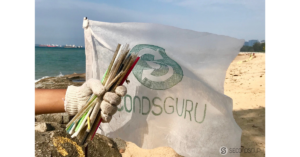
# 6 Plastic cups, plates
Amount collected: 754,969
Though they are very convenient to use and throw, plastic cups and plates are rarely recycled and languish around for 450 years before they decompose. They last in the ocean for hundreds of years impacting the marine food web and harming the marine wildlife. We hope this and other insidious facts about plastic will help you make changes in your lifestyle to choose the environment over convenience.
# 7 Plastic grocery bags
Amount collected: 740,290
At 4% of top items polluting the ocean , Singapore has a plastic bag problem- a huge one. Plastic bags – both heavy and light weight, float easily in air and water and travel over long distances. Marine animals such as seabirds and turtles get entangled in them and face a major threat of drowning. There is research to show that these plastics emit food-like odours, and marine animals are fooled into into eating them – a phenomenon known as biofouling. We can help in limiting our contribution to marine pollution by eliminating the use of disposable plastics, minimizing the plastics we carry home during grocery shopping and reusing what we have around the house instead!
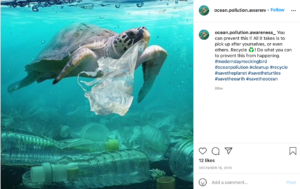
# 8 Plastic take-out containers
Amount collected: 678,312
Most restaurants pack take-out food in Styrofoam containers – giving foam packaging the honor of featuring in Singapore list of top 10 items found in ocean debris. Also known as expanded polystyrene foam (EPS), Styrofoam is not biodegradable and is difficult to recycle. It easily fragments into small pieces because of its soft structure – causing fish, seabirds and other sea animals to mistake it for food. Hard to digest, polystyrene pieces then get lodged into the digestive system of these unsuspecting sea animals, causing them to starve.
# 9 Other plastic bags
Amount collected: 611,100
Plastic bags which are smaller than normal plastic bags fall into this category of trash items littering our beaches and waterways. Easily air-borne and buoyant, these plastic bags make their way into seas and oceans forming massive ocean gyres of marine debris – such as the infamous Great Pacific Garbage Patch, and the North Atlantic Garbage Patch. This alone should get us worried about the 4,468 plastic bags collected during Singapore clean-up. The skyrocketing global annual consumption of plastic bags and related use of fossil fuel used to meet production demands is another reason to replace plastic bags with bags made from sustainable materials.
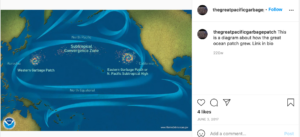
# 10 Plastic Lids
Amount collected: 605,778
What can possibly make coffee cups (which are already non-biodegradable and difficult to recycle) more harmful to the environment? Adding to their toxicity are the lids which millions of people use everyday as they enjoy their coffee on-the-go. Made from different types of single-use plastics, these lids hardly ever get recycled and enter the human food chain through sea food contaminated with tiny plastic particles. You can prevent this top item polluting the ocean from entering human food supply by skipping the lid or better yet by carrying your own reusable cup for when you want coffee on the go the next time.
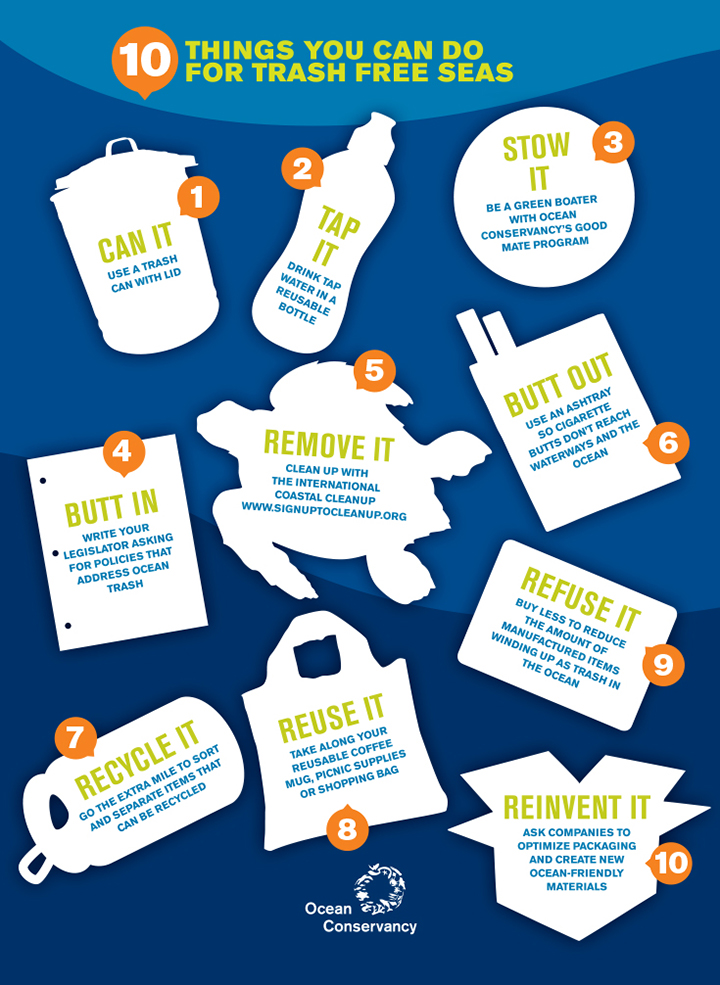
Conclusion
Studies into plastic debris in the ocean have determined that 8 million metric tons plastic enters our ocean every year-harming the health and well-being of wildlife and humans alike. Allowed to continue abated, at this rate of ocean pollution there will be more plastic by weight in our oceans than fish by 2050.
Related articles:
EcoBrands | Kayakasia paddles to pristine islands and discovers the tragedy of trash
The #NewNormal Zero Waste Toolkit | Incredibly useful things to always carry in your bag!
Microplastic Mayhem | The tiny pollutant that has a big impact


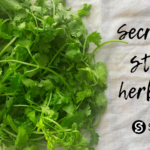
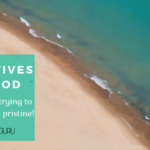
0 Comments